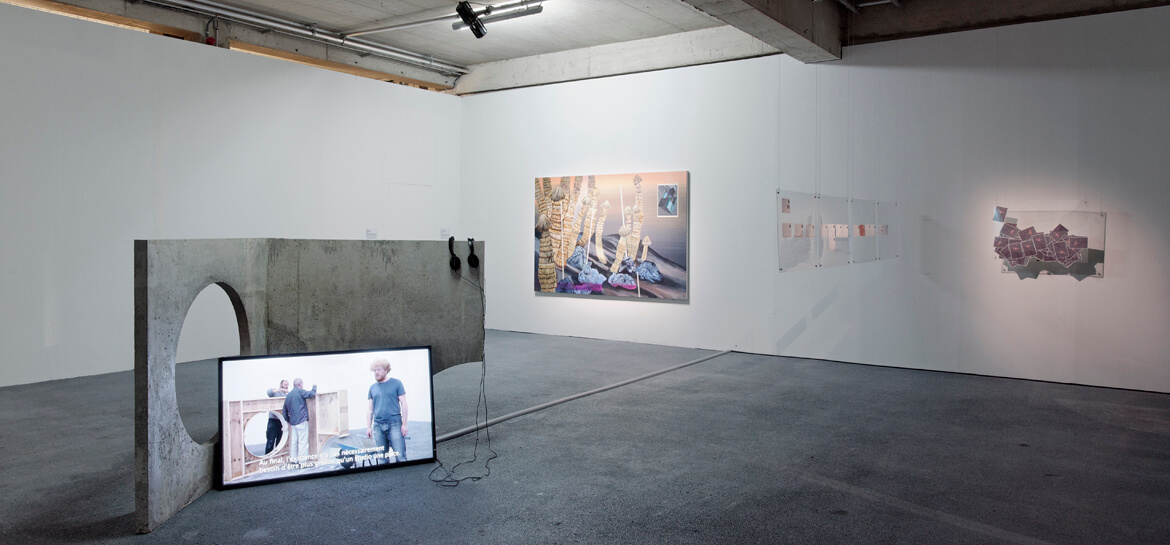SEARCH THE ENTIRE SITE

La méthode Jacobson
Using an exercise in neuromuscular relaxation conceived in 1938 by Edmund Jacobson as a core concept, an exhibition fashioned as though it were a mental image.
Using an exercise in neuromuscular relaxation conceived in 1938 by the American doctor and professor Edmund Jacobson as a core concept, this exhibition is fashioned as though it were a mental image. During a group visit of the American West, the residents of the Pavillon, Palais de Tokyo’s experimental creative space, created works that depict the effects of representation, fantasy and imagination tied to those landscapes.
In one of the neuromuscular relaxation exercises he published in 1938, the American doctor and professor Edmund Jacobson (1888-1983) asked his patients to relax all muscles then to summon a mental image. Subjects were then invited to describe each sensorial element of this ideal landscape, in which they were invited to include themselves; by creating this image, it was hoped that they would achieve a state of tranquility.
Using this method as a starting point, the exhibition “La Méthode Jacobson” [The Jacobson Method] examines the different parameters involved in constructing an image, and attempts more specifically to analyze landscape as a mental construct. During a collective trip to California, each resident of the Pavillon Neuflize OBC was instructed to consider not only the defining characteristics of the Great American West, but also the ways in which these attest to a certain conception of American identity. If reality does indeed take shape in fantasy, couldn’t the American landscape – depicted in paintings by the Hudson River School in the late 19th century, John Ford westerns, black and white photographs by Ansel Adams that focus on the expansive National Parks – be considered as a pure cultural invention, anchored in a collective unconscious?
Images captured in Death Valley, plays with clichés of the American panorama, fictional characters potentially haunting these vast spaces, remnants of the moments experienced there, etc. By oscillating between the ghostly vestiges of images perpetuated in the media and their corresponding physical and material realities, the residents of the Pavillon Neuflize OBC each address this question of landscape according to their individual artistic vocabularies and sensibilities. In works produced specifically for this exhibition, including Carlotta Bailly- Borg, Feiko Beckers, Julie Béna, Francesco Fonassi, Daiga Grantina, Peter Miller, Julien Perez, Agnieszka Ryszkiewicz, Gonçalo Sena and Theo Turpin situate the collective experience of their journey within a new exhibition landscape – images similar to those generated through the Jacobson method.
CURATOR
Marc Bembekoff is currently a curator at Palais de Tokyo (where he organized Damir Očko and Dewar & Gicquel’s solo exhibitions, amongst others), as well as an independent curator (“The Mystery Spot,” at the Fondation d’entreprise Ricard in Paris, 2012; “Du monde clos à l’univers infini” at Le Quartier in Quimper, 2012) and a co-founder of the collective Le Bureau/. He has contributed to several monographic publications (Bettina Samson, Nicolas Boulard, etc.) and exhibition catalogues (musée Rodin, Freud Museum, etc.).
WITH
The Pavillon Neuflize OBC: Carlotta Bailly-Borg, Feiko Beckers, Julie Béna, Francesco Fonassi, Daiga Grantina, Peter Miller, Julien Perez, Agnieszka Ryszkiewicz, Gonçalo Sena, Theo Turpin
Francesco Fonassi’s sound installation benefits from the support of Architettura Sonora: Sound modules by Architettura Sonora
Drop, designed by Lorenzo Brusci/Architettura Sonora

